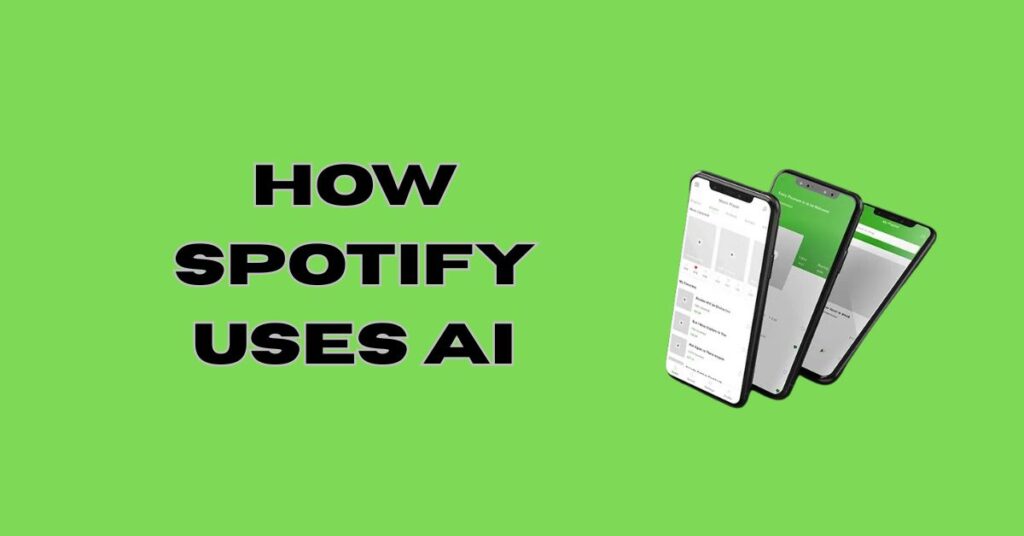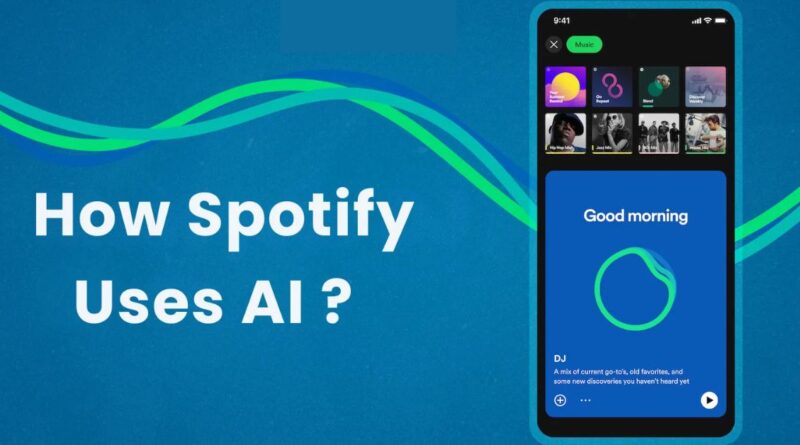How Spotify Outplays Competitors Using AI
Spotify has revolutionized the music streaming industry by leveraging artificial intelligence (AI) to enhance user experience, personalize recommendations, and optimize content delivery. With over 500 million active users, Spotify’s success is largely driven by its sophisticated AI algorithms, which analyze vast amounts of data to deliver tailored playlists, discover new artists, and even predict listener behavior. This article explores how Spotify uses AI across its platform and what businesses and developers can learn from its approach. From recommendation engines to natural language processing (NLP), Spotify’s AI strategies offer valuable insights into how technology can be harnessed to create a seamless and engaging user experience.
Personalized Recommendations with AI
One of Spotify’s most well-known AI features is its recommendation system, which powers playlists like Discover Weekly, Release Radar, and Daily Mix. These playlists are curated using a combination of:
-
Collaborative Filtering: Analyzes user behavior by comparing listening habits with those of similar users.
-
Natural Language Processing (NLP): Scans blogs, news articles, and social media to understand music trends and artist descriptions.
-
Audio Analysis: Uses convolutional neural networks (CNNs) to break down tracks by tempo, key, and mood.
What You Can Learn:
-
Leverage multiple data sources to improve recommendations.
-
Combine different AI techniques (collaborative filtering + NLP) for better accuracy.
-
Continuously refine algorithms based on user feedback.
AI-Powered Playlists: Discover Weekly & Daily Mix
Spotify’s Discover Weekly is a prime example of AI-driven personalization. Every Monday, users receive a playlist of 30 songs tailored to their tastes. This is achieved through:
-
Deep Learning Models: Analyze past listening history and compare it with millions of other users.
-
Clustering Algorithms: Group similar tracks and artists to suggest new music.
-
Feedback Loops: Adjust recommendations based on whether users skip or save songs.
What You Can Learn:
-
Use deep learning to predict user preferences accurately.
-
Implement feedback mechanisms to improve suggestions over time.
-
Automate content curation to keep users engaged.
NLP for Music Discovery
Spotify uses NLP to analyze text from music blogs, reviews, and social media to understand how people describe music. This helps in:
-
Identifying emerging trends before they become mainstream.
-
Enhancing search functionality by understanding user queries better.
-
Creating mood-based playlists (e.g., “Chill Vibes,” “Workout Energy”).
What You Can Learn:
-
Incorporate NLP to analyze user-generated content for insights.
-
Improve search and discovery with semantic analysis.
-
Use sentiment analysis to gauge user reactions to content.
AI in Podcast Recommendations
Spotify has expanded into podcasts and uses AI to recommend shows based on listening habits. Key techniques include:
-
Speech-to-Text Analysis: Transcribes podcasts to understand topics discussed.
-
Listener Behavior Tracking: Determines which episodes users engage with the most.
-
Contextual Recommendations: Suggests podcasts based on time of day or activity (e.g., commuting, relaxing).
What You Can Learn:
-
Expand AI applications beyond music to other media formats.
-
Use speech recognition to enhance content discoverability.
-
Context-aware recommendations improve relevance.
Predictive Analytics for User Retention
Spotify uses predictive analytics to reduce churn by identifying users at risk of canceling subscriptions. AI models analyze:
-
Listening frequency drops
-
Changes in playlist engagement
-
Subscription payment patterns
Spotify then sends personalized offers or recommendations to retain users.
What You Can Learn:
-
Predict churn risk early and take proactive measures.
-
Personalized incentives can improve retention.
-
Monitor engagement metrics to detect declining interest.
AI-Generated Music Curation
Spotify’s AI DJ feature (powered by OpenAI) creates a personalized radio station that adapts in real-time. It:
-
Analyzes listening history
-
Generates dynamic playlists with AI voice commentary
-
Adjusts based on real-time feedback

What You Can Learn:
-
Generative AI can enhance interactivity in apps.
-
Real-time adaptation keeps users engaged.
-
Voice AI adds a human-like touch to automated systems.
Fraud Detection & Copyright Protection
Spotify uses AI to detect:
-
Fake streams (artificial plays to inflate royalties)
-
Copyright violations (unauthorized uploads)
-
Bot-generated playlists
Machine learning models flag suspicious activity, protecting artists and the platform.
What You Can Learn:
-
AI can combat fraud in digital content platforms.
-
Automated copyright checks save legal costs.
-
Anomaly detection helps maintain platform integrity.
Voice Search & Smart Assistants
Spotify integrates with voice assistants like Google Assistant and Alexa, using AI for:
-
Voice-based song searches
-
Hands-free playlist control
-
Natural language understanding
What You Can Learn:
-
Voice AI improves accessibility.
-
Seamless integrations expand user reach.
-
Conversational AI enhances UX.
Dynamic Ad Targeting
Spotify’s free tier uses AI to deliver personalized ads by analyzing:
-
Listening habits
-
Demographic data
-
Time of day
This increases ad relevance and revenue.
What You Can Learn:
-
AI-driven ad targeting boosts engagement.
-
Contextual ads perform better.
-
Dynamic ad insertion maximizes ad revenue.
The Future of AI at Spotify
Spotify continues to innovate with AI, exploring:
-
AI-composed music
-
Enhanced real-time lyric analysis
-
Deeper social listening features
What You Can Learn:
-
Stay ahead by experimenting with emerging AI trends.
-
User expectations evolve AI must too.
-
Innovation keeps a brand competitive.
Conclusion
Spotify’s AI-driven approach demonstrates how machine learning, NLP, and predictive analytics can transform user experience. By analyzing vast datasets, personalizing content, and automating curation, Spotify keeps listeners engaged while staying ahead of competitors.
FAQs
How does Spotify use AI for music recommendations?
Spotify uses a combination of collaborative filtering, natural language processing (NLP), and audio analysis to recommend songs. It compares your listening habits with similar users, scans online discussions about music, and analyzes the audio characteristics of tracks to personalize suggestions.
What is Spotify’s Discover Weekly, and how does AI power it?
Discover Weekly is a personalized playlist updated every Monday with 30 new songs. Spotify’s AI analyzes your listening history, compares it with other users, and uses deep learning to predict tracks you might like. It also considers song attributes (tempo, mood, genre) and adjusts based on your interactions (skips, saves).
How does Spotify use NLP for music discovery?
Spotify scans blogs, news articles, and social media to understand how people describe music. This helps in:
-
Identifying trending songs before they go viral.
-
Improving search results (e.g., finding “upbeat workout songs”).
-
Creating mood-based playlists (e.g., “Chill Vibes,” “Focus Flow”).
How does Spotify’s AI DJ work?
Powered by OpenAI, Spotify’s AI DJ curates a personalized radio station with AI-generated voice commentary. It analyzes your listening habits, selects songs dynamically, and adjusts in real-time based on your feedback (skips, likes).
Does Spotify use AI for podcasts?
Yes, Spotify applies AI to podcast recommendations by:
-
Using speech-to-text to transcribe and categorize episodes.
-
Tracking which podcasts users listen to most.
-
Suggesting shows based on time of day or activity (e.g., “Morning News Brief”).
How does Spotify prevent fake streams and fraud?
Spotify’s AI detects:
-
Fake streams (bots inflating play counts).
-
Copyright violations (unauthorized uploads).
-
Suspicious playlist manipulation.
Machine learning models flag unusual activity to protect artists and royalties.
How does Spotify use AI for ads?
For free-tier users, Spotify’s AI delivers personalized ads by analyzing:
-
Listening habits (genre preferences).
-
Demographics (age, location).
-
Time of day (morning vs. night ads).
This makes ads more relevant and increases engagement.
Can Spotify’s AI create music?
While Spotify doesn’t compose music yet, it uses AI to:
-
Generate mashups and remixes (e.g., “AI-powered playlists”).
-
Predict future hits based on trends.
-
Assist in music mastering (e.g., Soundtrap’s AI tools).
How does Spotify’s voice search work?
Spotify integrates with Google Assistant, Alexa, and Siri, using AI to:
-
Understand natural language queries (e.g., “Play relaxing jazz”).
-
Control playback hands-free (“Skip this song”).
-
Improve search accuracy over time.




